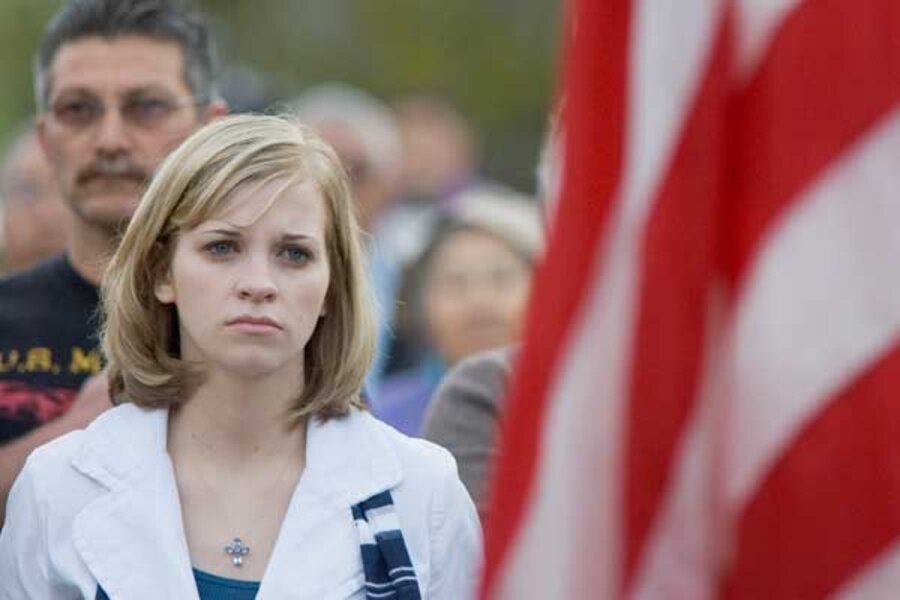America’s post-9/11 wars have been unique in that there is no clear front line of fighting.
“In the past, you could say what was the front line and what wasn’t,” says Margaret Harrell, senior fellow at the Center for a New American Security. “And distance from the front meant relative safety.”
So female US troops, who are barred from direct combat occupations, have been put in places that “were supposed to be safe” as nurses and supply officers. It wasn’t long, however, before female soldiers were “the ones driving the convoys that were getting ambushed.”
Pfc. Jessica Lynch became an early symbol of American heroism and, later, when the US military was found to have overdramatized parts of her story, a quiet yet powerful spokesperson for America’s treatment of its soldiers.
Today, “there are a fairly large number of women who wear the combat action badge,” says Ms. Harrell, who conducted a congressionally-mandated study on whether the Army was violating its own policies on how it used its female soldiers in Iraq.
Not only have they served in combat, women have also gone on to earn the Silver Star, one of the top military medals for valor. “When I talk to commanders, they say women are performing as well as their male peers, and that the services couldn’t proceed without women doing those jobs,” Harrell says.
As a result, a Defense Department commission recently recommended that all gender-based restrictions for women be removed. “That’s a big leap,” Harrell adds.
How quickly such restrictions could be lifted remains to be seen, but a number of senior military officials have said they support a reexamination of women’s role in combat. Harrell says she can imagine a time in the near future in which the Pentagon will fill field specialties based on need, rather than the gender of who fills them.
“I think there’s a growing recognition of what women can do. It would make the management of the system so much easier,” she adds. “I think that would be a huge cultural shift.”





